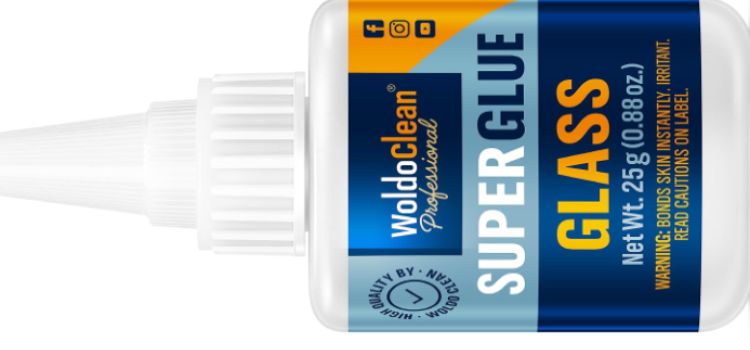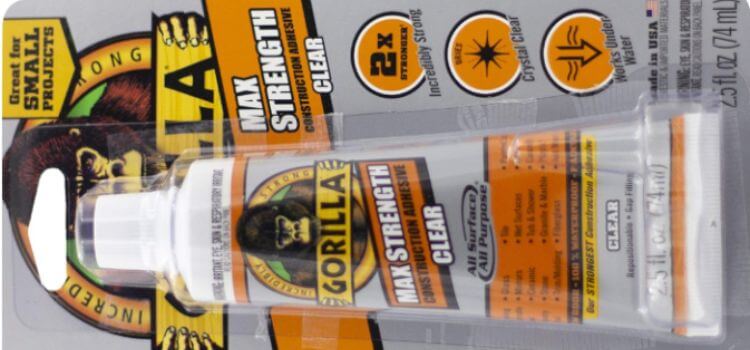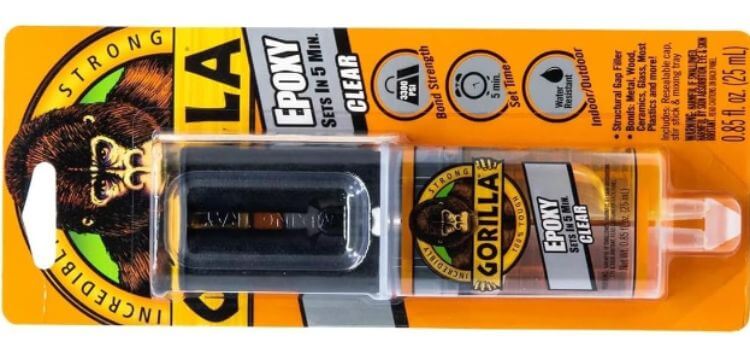As an Amazon Associate, I earn from qualifying purchases

The best glue for mirrors is a high-quality mirror adhesive specifically designed for glass surfaces. It provides a solid and durable bond for secure mirror mounting.
Choosing the glue for mirrors is crucial to ensure a long-lasting and secure attachment. With various options available in the market, selecting the best adhesive can be overwhelming. Factors to consider include the type of surface the mirror will be mounted on, the size and weight of the mirror, and the location where it will be placed.
By understanding these factors and selecting a mirror adhesive suitable for your specific needs, you can ensure a successful mirror installation that will stand the test of time.
The Importance Of Choosing The Right Mirror Adhesive
The Importance of Choosing the Right Mirror Adhesive
Selecting the best mirror adhesive when hanging mirrors in your home is crucial. Choosing the suitable adhesive ensures that your mirror stays securely in place, preventing any accidents or damage.
Factors Affecting Adhesive Choice
- Surface Material of the Wall
- Size and Weight of the Mirror
- Exposure to Moisture
- Temperature Fluctuations
Risks Of Improper Application
- Unsafe Conditions
- Potential Damage to the Mirror
- Instability and Fall Hazards
Types Of Mirror Glues
Mirrors are essential to any home decor, adding functionality and aesthetic appeal. When installing or repairing mirrors, choose the suitable glue. To guarantee a strong and durable binding, glue is essential. Several types of mirror glues are offered on the market, each with unique attributes and applications.
Silicone-based Adhesives
Due to their excellent adhesion and flexibility, silicone-based adhesives are popular for mirror installations. They provide a strong bond and are moisture-resistant, making them ideal for use in bathrooms or areas with high humidity. Additionally, they offer good resistance to temperature changes, preventing the mirror from loosening or shifting over time.
Acrylic Adhesives
Acrylic adhesives, or mirror mastic, are widely used for bonding mirrors to various surfaces. They are easy to apply and provide a quick setting time, allowing for efficient installation. They are appropriate because they provide exceptional strength and durability for indoor and outdoor mirror applications. Furthermore, they are typically odorless and emit minimal volatile organic compounds (VOCs), ensuring a safer and more environmentally friendly bonding solution.
Epoxy Resins
Epoxy resins are known for their exceptional bonding strength and versatility. They can bond strongly with various materials, including glass and metal, making them suitable for multiple mirror installation projects. They offer high-impact resistance and long-term durability, ensuring the mirror remains securely in place. Additionally, they provide excellent chemical and moisture resistance, making them suitable for challenging environments.
Silicone-based Adhesives: Pros And Cons

Regarding mirrors, using a suitable adhesive is crucial for a secure and long-lasting bond. Due to their unique properties, silicone-based adhesives are popular for mirror installations. Let’s explore the pros and cons of silicone-based adhesives in the context of mirror applications.
Flexibility And Strength
Silicone-based adhesives offer a good balance of flexibility and strength. They can absorb vibrations and movements, making them ideal for mirrors in areas prone to slight shifts.
Curing Time And Durability
Curing time for silicone adhesives can vary but generally offers a quick setup. Once cured, they are durable and can withstand temperature changes without losing their bond strength.
Acrylic Adhesives For Mirror Work
Regarding mirror work, a suitable adhesive is crucial for a secure and long-lasting bond. Acrylic adhesives have gained popularity for mirror installation and repair due to their excellent bonding properties and ease of use.
Ease Of Use
Acrylic adhesives are known for their user-friendly application process, making them ideal for professionals and DIY enthusiasts. With their quick-setting nature, they allow for efficient and hassle-free mirror installations. Whether you are a novice or an experienced craftsman, the simplicity of working with acrylic adhesives makes them a top choice for mirror projects.
Bonding Properties
The exceptional bonding properties of acrylic adhesives ensure a reliable and durable mirror attachment. This type of adhesive forms a strong, evident bond that resists yellowing and deterioration over time. It effectively adheres to various surfaces, including glass, wood, and metal, offering a flexible answer for different mirror applications.
Epoxy Resins: A Heavy-duty Option
When securing mirrors, epoxy resins stand out as a heavy-duty option that provides exceptional hold and longevity. Epoxy resins are renowned for their strength and durability, making them ideal for attaching mirrors to various surfaces.
Mixing And Application Process
Using epoxy resins involves mixing two components, the resin, and the hardener, in equal parts to create a strong adhesive. Once combined, the application process requires precision and care to ensure proper adhesion. The resin should be spread evenly on the back of the mirror, followed by the hardener, before pressing it firmly against the desired surface.
Longevity And Hold Strength
Epoxy resins offer unparalleled longevity and hold strength, establishing a trustworthy connection that endures throughout time. This heavy-duty adhesive creates a strong connection between the mirror and the surface, ensuring it remains securely in place, even in high-traffic areas or environments with varying temperatures.
Safety Precautions When Using Mirror Glue

For securing mirrors:
- Opt for a high-quality mirror adhesive that provides a strong bond.
- Put safety first by donning safety gear and operating in an environment with adequate ventilation to avoid inhaling fumes.
- Before using the adhesive, properly clean the surface for optimal adhesion.
Ventilation Requirements
Protective Gear
When using mirror glue, ensure proper ventilation in the area. Use a fan or open the windows to avoid breathing in fumes. Put on safety glasses and gloves as protective gear goggles to shield skin and eyes from potential harm.
Application Techniques For Mirror Glue
Applying suitable glue correctly is crucial for a secure and long-lasting bond when installing mirrors. Proper application techniques for mirror glue can make all the difference in ensuring that your mirror stays in place and looks great for years.
Surface Preparation
Before applying mirror glue, it’s essential to prepare the surface properly to ensure maximum adhesion. Clean the surface of the mirror and the area where it will be attached, applying a light detergent to get rid of any filth, oil, or dust. Once clean, dry the surface thoroughly with a lint-free cloth to ensure no moisture or residue could affect the bonding process.
Adhesive Spreading Methods
A few methods can be used to achieve the best results when spreading the mirror glue. One standard procedure is to apply the adhesive in tiny dots or lines along the mirror’s edges, ensuring the entire perimeter is covered. Another effective technique is to spread the adhesive in a zigzag pattern across the back of the mirror, ensuring even coverage and a strong bond.
Curing And Bonding Time
Understanding Cure Rates
When choosing a glue for mirrors, understanding cure rates is crucial. The cure rate refers to the time required for the adhesive to reach its full strength. Different glues have varying cure rates, so selecting one that aligns with your project timeline is essential.
Factors Influencing Bonding Time
Several factors influence bonding time when working with mirror glues. The material of the mirror, the surface preparation, and the environmental conditions all play a role in how quickly the adhesive bonds. Considering these factors, you can ensure a solid and durable mirror bond.
Removal And Maintenance Of Glued Mirrors

If you have ever had to remove or maintain a glued mirror, you know that it can be a delicate and challenging task. Whether you are dealing with a framed or frameless mirror, proper removal and maintenance are essential to prevent harm and guarantee the durability of your mirror. This section will explore the best practices for safely removing glued mirrors and providing the necessary upkeep to keep them pristine.
Tips For Safe Removal
When it comes to removing a glued mirror, safety should be the top priority. Here are some tips to ensure a safe and efficient removal process:
- Put on safety goggles and gloves to avoid getting hurt by broken glass.
- Utilize a hairdryer or heat gun to warm the adhesive and loosen the bond gently.
- Insert a thin putty knife or wire behind the mirror and slowly pry it away from the wall.
- Have a helper to support the mirror as it is being removed to prevent it from falling and breaking.
Cleaning And Upkeep
Once the mirror is safely removed, cleaning the surface and ensuring proper upkeep is essential to maintain its appearance. Here are some cleaning and maintenance tips:
- Utilize a gentle, lint-free cloth and glass cleaner to clean the mirror surface thoroughly.
- Inspect the back of the mirror for any remaining adhesive and remove it carefully.
- Check for any damage to the mirror edges and repair or seal them as needed to prevent moisture infiltration.
- Regularly inspect the mounting area for any signs of deterioration and reapply the adhesive if necessary.
Expert Recommendations And Product Reviews
Regarding mirrors, having a suitable adhesive is crucial to ensure they stay in place and do not fall and break. However, with so many options, deciding which one can take time. This article will provide expert recommendations and product reviews to help you find the best mirror glue.
Top-rated Mirror Glues
Following a thorough investigation and testing, we have produced a list of the top-rated mirror glues recommended by experts:
| Product Name | Features |
|---|---|
| Gorilla Clear Grip | Water-resistant, crystal clear, stronghold, dries in 10-45 seconds |
| Loctite PL530 Mirror Adhesive | Water and heat-resistant, stronghold, dries in 24 hours, suitable for large mirrors |
| Devcon 2-Ton Epoxy | Water-resistant, stronghold, dries in 30 minutes, suitable for small mirrors |
Experts have tested and recommended these mirror glues for their durability, strength, and water-resistant properties.
User Testimonials
But don’t just take our word for it. Here are some user testimonials for the top-rated mirror glues:
- “I used Gorilla Clear Grip to hang a heavy bathroom mirror, which has been in place for over a year. Highly recommend!” – Sarah.
- “I was skeptical about using an epoxy for my mirror, but Devcon 2-Ton Epoxy held up surprisingly well. It dried fast and was simple to apply.” – John.
- “Loctite PL530 Mirror Adhesive was perfect for my large bathroom mirror. It was easy to apply and has held up well even with the steam from the shower.” – Emily.
These user testimonials provide real-life experiences of people who have used these mirror glues and can attest to their effectiveness.
In conclusion, when choosing the best glue for mirrors, it is essential to consider the adhesive’s strength, water-resistant properties, and drying time. Based on our research and expert recommendations, Gorilla Clear Grip, Loctite PL530 Mirror Adhesive, and Devcon 2-Ton Epoxy are some of the top-rated mirror glues available.
Frequently Asked Questions
For mirrors, the best adhesive to use is a mirror mastic or adhesive specifically designed for mirrors. These adhesives provide robust and secure bonding for mirrors to various surfaces.
Yes, Gorilla Glue can be used on mirrors. It is a strong adhesive that can bond various surfaces, including glass and metal. However, it is essential to use it sparingly and avoid getting it on the mirror’s reflective surface.
To glue two mirrors together:
Use a robust and transparent adhesive designed for glass.
Clean the surfaces thoroughly before applying the glue.
Apply a thin, even layer to one mirror and carefully press the other mirror onto it.
Let the glue cure by the product instructions.
To glue side mirrors, use a high-quality automotive adhesive for a solid and durable bond. Clean the surfaces thoroughly before applying the adhesive for best results.
Conclusion
Choosing the best glue for mirrors is an important decision that requires careful consideration. It is vital to select a high-quality adhesive that is specifically designed for mirrors. With suitable glue, you can ensure that your mirrors stay securely in place for years.
Remember to follow the manufacturer’s instructions carefully and take safety precautions when using glue. By doing so, you can achieve a flawless and long-lasting result.
As an Amazon Associate, I earn from qualifying purchases
Leave a Reply